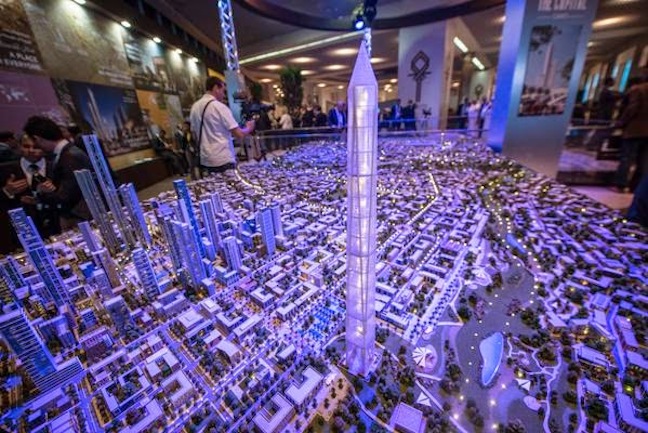Cairo 2, the Pharaoh’s Curse — Having evidently solved all of the problems that a country as complex and confused as Egypt can pose, President Abdul Fattah al-Sisi now intends to “duplicate” Cairo and to move his nation’s capital. The site chosen for the new seat of government, and for a population of above five million people, is a vast stretch of open desert to the east of the present city.
The project is—to say the least—ambitious. The new metropolis is to occupy a land area seven times the size of Paris and to host 2,000 “institutes of education” between schools and universities as well as 600 clinics and hospitals. The Egyptian Government claims, not very credibly, that the entire thing can be built in seven years at a cost of around $45 billion.
This is not the first attempt of Egypt to institute a project of urban renewal on a truly “pharaonic” scale—but the last time it went very badly indeed, to the point where it (indirectly) left us with the myth of the “Curse of the Pharaoh.”
The “great heretic” Amenhotep IV, aka Akhenaton (d. circa 1335 B.C.), finding himself in contrast with the Gods of the old capital of Thebes—and with their priests—abandoned the city to found a new one called Akhetaton. His people however did not much like the place and fled as soon soon as the young Pharaoh died prematurely for, ah, undefined causes. He did though manage in time to father a male heir, the better known Tutankhamun (“King Tut”), who them himself died at just 18 years of age.
Tutankhamun did not last long enough to be of significant historical importance, but most of the team of archeologists who rediscovered his tomb in the 1920s died soon after for varied and mysterious causes, giving rise to the legend of the “Curse.”
White House 2, moral architecture — The United States Secret Service—the agency of the Federal Government charged with protecting the lives of the Presidents and their families—has asked Congress for eight million dollars to build a full-scale replica of the White House.
The structure would be used to give greater realism to the training of Secret Service agents, and to that of their guard dogs, at present forced to train in what amounts to “a parking lot, basically,” according to Joseph Clancy, the new director of the agency. He says this means the dogs learn to “respond on a hard surface, rather than on grass” like that of the real Presidential lawn.
The proposal reached Congress together with a new scandal of two agents who accidentally smashed through a White House protective barrier in a Government car while “under the influence” of alcohol. Six months before a man armed with a knife managed to penetrate deeply into the building before agents managed to stop him.
Last year three other agents were sent home after they were found drunk while they were supposed to be “protecting” President Obama during a State Visit to the Netherlands—an episode which brings to mind the scandal that exploded in Colombia in 2012, when a dozen agents, having once again drunk rather more than was wise, were found to have brought local prostitutes back to their hotel while they awaited the arrival of the President, who was to participate in an “economic summit meeting.”
Part of the intention behind the proposal to build a “real copy” of the White House where agents can prepare for their primary mission—that of keeping the President of the United States alive—seems to be that of creating an instrument to further the reform of the Agency, once highly respected and today with its reputation in tatters.
Chinese Israel — Now even Israel has announced that it has asked to become a founding member of the Asian Infrastructure Investment Bank, China’s challenge to the role of the Washington-based International Monetary Fund. This is still another indication that the American system of alliances is undergoing a spectacular and perhaps not entirely planned transformation.












